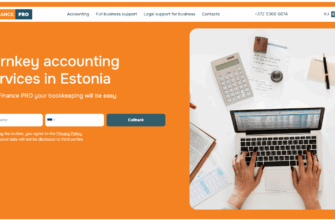When you picture cash in a digital world, you probably imagine the instant anonymity of handing over a bill and walking away. Cryptocurrencies tried to recreate that feeling, and Dash is one of the projects that focused on privacy and speed from early on. This article explores how Dash approaches financial privacy, the technical tradeoffs involved, and practical steps you can take to use it more privately and responsibly.
- How Dash builds privacy into payments
- PrivateSend: strengths and limitations
- InstantSend, masternodes, and user experience
- Comparing Dash to other privacy-focused coins
- Practical tips for using Dash more privately
- Tradeoffs and operational security
- Regulatory landscape and responsible use
- When privacy matters most
- Future developments and what to watch
- Deciding if Dash is right for you
How Dash builds privacy into payments
Dash implements privacy primarily through a feature called PrivateSend, which mixes coins to obfuscate transaction histories. Rather than relying on a single-party mixer, PrivateSend uses masternode-facilitated CoinJoin-style mixes that break transactions into predefined denominations and blend them with other users’ funds.
Under the hood, masternodes play a key role. These are servers that provide extra services to the network—transaction mixing, governance voting, and InstantSend for rapid confirmations. Operators must stake collateral (1,000 DASH historically) to run a masternode, which helps align incentives and keeps the network functional for privacy-related tasks.
PrivateSend: strengths and limitations
PrivateSend is straightforward for users: enable mixing in the Dash wallet, choose an amount, and let the client participate in rounds of mixing. For routine use—paying for goods or sending modest transfers—it can significantly increase the difficulty of linking inputs and outputs on-chain.
However, PrivateSend isn’t a silver bullet. Because mixes use fixed denominations and a limited number of rounds, very determined chain-analysis firms can sometimes de-anonymize transactions, especially if users reuse addresses or consolidate mixed funds. In short, PrivateSend raises the bar for privacy but does not guarantee absolute untraceability.
InstantSend, masternodes, and user experience

Beyond privacy, Dash markets itself on speed and usability. InstantSend leverages masternode quorums to lock inputs and produce near-instant confirmations—useful for point-of-sale transactions where waiting for multiple block confirmations would be impractical. A private, instant payment can feel a lot like handing over cash, and that experience is central to Dash’s user-focused design.
From a user perspective, the combination of mixing and instant finality is compelling. I once tested a small merchant transaction using PrivateSend plus InstantSend: the checkout confirmed in seconds and the vendor accepted the payment without extra fuss. The flow felt modern while preserving more privacy than a raw on-chain transfer.
Comparing Dash to other privacy-focused coins
Privacy in crypto comes in several flavors. Dash uses CoinJoin-style mixing; Monero employs built-in privacy primitives like ring signatures, stealth addresses, and RingCT to hide senders, receivers, and amounts; Zcash offers optional zero-knowledge proofs to shield transaction data. Each approach has different tradeoffs in technology, performance, and regulatory perception.
| Feature | Dash | Monero | Bitcoin |
|---|---|---|---|
| Privacy model | CoinJoin-style mixes (PrivateSend) | Built-in privacy (ring sigs, stealth addresses) | Transparent ledger |
| Transaction speed | Fast, InstantSend option | Moderate | Variable, often slower |
| Regulatory attention | Moderate | High | High, but transparent |
That table simplifies complex tradeoffs, but it highlights why users choose one system over another: some prioritize fungibility and deep anonymity, while others want a balance of privacy, speed, and familiarity with Bitcoin-like behavior.
Practical tips for using Dash more privately
Privacy isn’t automatic; it requires habits. First, avoid address reuse. Reusing the same address ties multiple incoming payments together and undermines mixing efforts. Use a wallet that generates a fresh receiving address for each transaction.
Secondly, separate funds. If you mix coins for privacy, try to keep mixed outputs separate from non-mixed funds. Consolidating them later—especially when withdrawing to an exchange that performs KYC—can reveal links that mixing was meant to obscure.
- Enable PrivateSend in your Dash wallet for amounts you care about.
- Mix funds multiple times and in different denominations to raise anonymity sets.
- Prefer direct peer-to-peer payments or merchants accepting Dash to reduce exposure through custodial services.
Finally, keep software updated. Wallet and protocol upgrades often contain security fixes and improvements to privacy mechanisms, so running the latest release reduces risk.
Tradeoffs and operational security
Every privacy measure comes with tradeoffs. Mixing increases on-chain complexity and can attract attention from surveillance systems that flag privacy-centric behavior. InstantSend quorums and masternode involvement introduce trust assumptions that differ from fully permissionless mining.
Operational security matters beyond the blockchain: avoid posting public receipts that reveal amounts or counterparties, consider metadata risks from IP addresses, and think about how exchange KYC records could correlate on-chain patterns. For many users, a layered approach—mixing, best wallet practices, and cautious off-chain behavior—provides practical privacy without extreme steps.
Regulatory landscape and responsible use

Privacy coins and privacy features exist in a contested regulatory environment. Some exchanges and jurisdictions restrict or scrutinize privacy-oriented transactions more heavily than transparent ones. That’s not only about compliance; it’s about the risk that privacy tools could be misused for illicit activities.
Responsible use means balancing legitimate privacy needs with legal obligations. Individuals seeking financial privacy for personal safety, commercial discretion, or protection from data harvesting should still comply with applicable laws. When in doubt, consult legal counsel or compliance experts familiar with cryptocurrency regulations in your jurisdiction.
When privacy matters most
There are clear cases where privacy is more than a preference: domestic abuse survivors protecting finances, activists operating under repressive regimes, or entrepreneurs shielding trade secrets. For these users, privacy is essential to safety and livelihood, and tools like Dash can be part of a broader security strategy.
I’ve spoken with small-business owners who value privacy to avoid revealing supplier relationships or pricing strategies. For them, the speed and usability of Dash made it feasible to accept digital payments without exposing their entire accounting history to the public blockchain.
Future developments and what to watch
Privacy technology evolves rapidly. Developers everywhere are experimenting with greater anonymity, whether through more sophisticated mixing, zero-knowledge proofs, or improvements to peer-to-peer transaction privacy. Dash’s roadmap and community proposals continue to influence how it balances privacy, speed, and usability.
Watch for upgrades to mixing protocols, changes in masternode governance, and interoperability with privacy-enhancing wallet standards. At the same time, keep an eye on marketplace dynamics: exchange delistings, regulatory guidance, or tooling improvements can shape how effective privacy features are in practice.
Deciding if Dash is right for you
Choose tools that match your threat model. If you need modest privacy with fast confirmations and a familiar Bitcoin-like structure, Dash can be a practical option. If you need deep anonymity against state-level adversaries, other protocols might offer stronger guarantees at the cost of convenience.
Test small amounts before trusting larger sums. Use a combination of on-chain privacy features and off-chain operational security. The best outcomes come from informed choices rather than assumptions that any single tool provides complete protection.
If you want to learn more about cryptocurrencies, privacy tools, and practical guides for digital finance, visit https://themors.com/ and read other materials from our website. Your financial privacy is a journey—inform yourself, choose wisely, and keep improving your habits.









